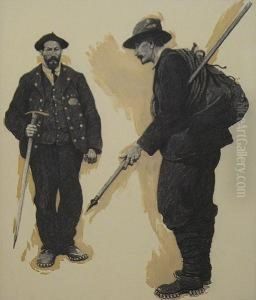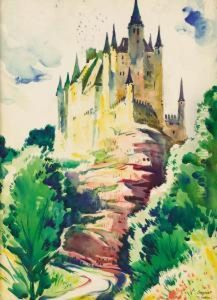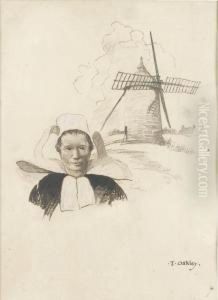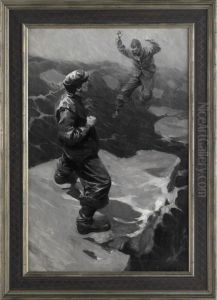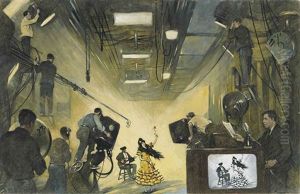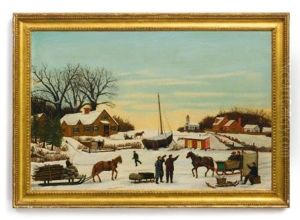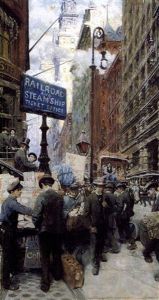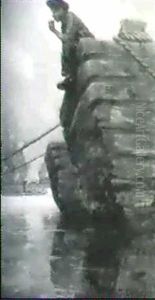Thornton Oakley Paintings
Thornton Oakley was an American illustrator and artist, born on March 27, 1881, in Pittsburgh, Pennsylvania. He grew up in a culturally rich environment; his father was a successful businessman, which allowed Oakley the privilege of a comprehensive education and exposure to the arts from an early age. He pursued his formal education in art at the University of Pennsylvania, where he studied under the famed illustrator and teacher Howard Pyle, who was a significant influence on Oakley's early career. Pyle's emphasis on dramatic storytelling and historical accuracy would become cornerstones in Oakley's own work.
After completing his education, Oakley embarked on a successful career as an illustrator, becoming known for his vibrant and detailed illustrations that often depicted historical and industrial scenes. His work was published in prominent magazines of the time, such as Harper's Monthly and Century Magazine, and he became particularly noted for his contributions to books and periodicals that focused on historical narratives and travel. Oakley's illustrations were celebrated for their dynamic composition and depth of detail, which brought to life the subjects he depicted, whether scenes from American history or the industrial might of the early 20th century.
In addition to his illustration work, Oakley was also a respected educator. He followed in the footsteps of his mentor Howard Pyle by teaching at the Pennsylvania Academy of the Fine Arts, where he influenced a new generation of artists. Oakley's interest in education extended beyond the classroom; he was an advocate for public art and believed in the importance of art in everyday life.
Oakley's travels, particularly to Europe and the Middle East, further enriched his palette and expanded his thematic repertoire. He was an avid traveler, and his experiences abroad influenced his work, adding elements of exoticism and a broader perspective on the world. This global perspective was reflected in his contributions to the field of illustration, where he continued to work until his death on April 4, 1953, in Bryn Mawr, Pennsylvania.
Throughout his career, Thornton Oakley was recognized not only for his artistic talent but also for his contribution to the field of illustration and art education. His legacy is preserved through his numerous works housed in museums, galleries, and private collections around the United States. Oakley's life and work offer a vivid window into the evolving American cultural and industrial landscape of the early 20th century, marking him as a significant figure in the history of American art and illustration.
